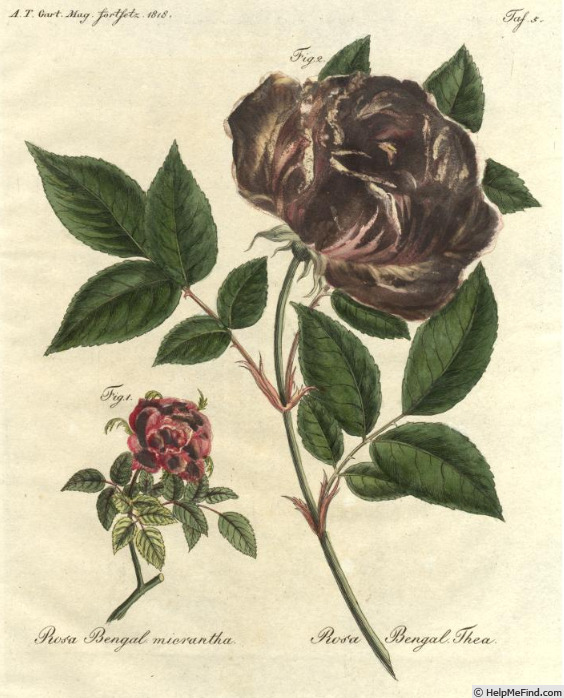|
|
'Thé commun' rose Description

Photo courtesy of jedmar
HMF Ratings:
127 favorite votes.
Average rating:
EXCELLENT-.
Class:
China / Bengale, Species Cross, Tea.
Bloom:
Blush, darker center. [Light pink to white, light yellow undertones.] Strong, tea fragrance. Large, very large, double (17-25 petals), reflexed bloom form. Continuous (perpetual) bloom throughout the season, blooms in flushes throughout the season.
Habit:
Armed with thorns / prickles, bushy, upright, well-branched. Medium, semi-glossy foliage. 3 to 5 leaflets.
Height: 1' to 2' (30 to 60cm).
Growing:
USDA zone 7b and warmer. Requires spring freeze protection (see glossary - Spring freeze protection) .
Patents:
Patent status unknown (to HelpMeFind).
Notes:
R. x odorata (hort. ex Andrews) Sweet (1818).
Parentage is only speculation. See References. The description given above on HMF is from contemporaneous references, including Redouté, Lindley and Andrews. Many of the roses sold under this name today do not match those descriptions, including tall, climbing, once-blooming roses. One rose being considered is the Bermuda Mystery Rose, "Spice."
There is no universal agreement that any of the roses sold by this name represent the original. The original hybrid introduced to the West may very well be extinct, as it disappeared from commerce in the 19th century.
Sir Abraham Hume, Baronet /February 20, 1749 London - March 24, 1838 London), Tory politician and floriculturist, active as a rosarian together with his wife, Amelia Egerton (November 25, 1751 - August 8, 1809), founding member of the Geological society and Fellow of the Royal Society. See also the peony 'Humei'
The attribution of "à odeur de thé" to Prevost is incorrect. Prevost doesn't list this rose as one of his own cultivars, he describes the type of the Tea rose in 1829.
|